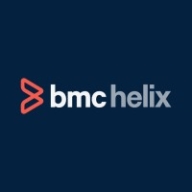


Chef and BMC TrueSight Server Automation are two prominent solutions competing in the server automation market. Chef seems to have the upper hand due to its better support and easier setup, though BMC TrueSight is valued for its extensive features.
Features: Chef users appreciate its powerful automation capabilities and integration with various development tools, along with its flexibility in configuration management. BMC TrueSight Server Automation is valued for its extensive feature set, including compliance management, vulnerability remediation, and comprehensive server lifecycle management.
Room for Improvement: Chef needs better documentation, improved GUI performance, and more robust security features. BMC TrueSight Server Automation could improve its intuitiveness, enhance its reporting tools, and simplify its user interface.
Ease of Deployment and Customer Service: Chef is praised for straightforward deployment and strong customer support, making the setup process highly efficient. BMC TrueSight Server Automation has a more complex deployment process but provides detailed documentation and a responsive support team.
Pricing and ROI: Chef is often seen as more cost-effective, providing quicker ROI due to lower setup costs and flexible licensing options. BMC TrueSight Server Automation has a higher initial setup cost but justifies this with extensive features and long-term benefits, making it a worthwhile investment for larger enterprises.
Everything we've gained from it makes my job easier day after day, and I see value in it as an engineer.
Microsoft Intune not only saves costs by reducing the number of personnel needed but also offers a comprehensive solution for managing laptops, applications, security, individual access, and enrollment.
Importantly, when someone leaves the company, it helps protect document access on their devices.
When a support ticket is submitted, it directly reaches someone with Intune support expertise.
When I contacted Microsoft, they had the same expertise, if not more, which is phenomenal because I felt heard and my problem was solved.
Sometimes, the support provided is excellent, and the representative is knowledgeable, while other times, the service needs improvement.
The scalability of Microsoft Intune is ten out of ten.
Ideally, we want to automatically segregate devices based on user properties like primary use, but currently, dynamic groups seem limited to device properties.
It supports organizations with 200 endpoints and those with more than 15,000 endpoints.
We have not experienced downtime, bugs, or glitches.
It appears Microsoft Intune undergoes changes without informing customers.
Microsoft Intune has been very stable.
Features like unlocking devices sometimes fail, and the support offered for other operating systems is insufficient.
There are communication issues, so you might start working with a feature without knowing if it will be deprecated six months from now.
Many third-party companies offer single-pane-of-glass reporting that shows you what your update environment looks like, how your patch is doing, application status, etc., but Intune's reporting is not intuitive.
Introductory professional services, like a fast-track service, were included with our E5 membership, and there have been no additional costs.
The Intune suite and add-ons, such as batch management and remote help, are costly.
It costs approximately forty euros per user per month.
Intune excels in configuration and compliance management for Windows 10, ensuring devices receive timely updates and adhere to organizational standards.
Dynamic groups allow us to set conditions for automatic membership, eliminating the need for user intervention or manual review and ensuring a seamless workflow.
Windows Autopatch is the most valuable because it removes the burden of patch management.
The overall role of BMC TrueSight Server Automation in managing configuration drift brings return on investment through its automation, which helps save me the time and effort of my operations team.
| Product | Market Share (%) |
|---|---|
| Microsoft Intune | 9.4% |
| BMC TrueSight Server Automation | 3.1% |
| Chef | 2.1% |
| Other | 85.4% |



| Company Size | Count |
|---|---|
| Small Business | 116 |
| Midsize Enterprise | 46 |
| Large Enterprise | 152 |
| Company Size | Count |
|---|---|
| Small Business | 2 |
| Midsize Enterprise | 5 |
| Large Enterprise | 15 |
| Company Size | Count |
|---|---|
| Small Business | 2 |
| Midsize Enterprise | 7 |
| Large Enterprise | 12 |
Microsoft Intune provides centralized management of mobile devices and applications, ensuring security, compliance, and productivity through integration with Microsoft services like Microsoft 365 and Azure Active Directory.
Organizations use Intune for managing mobile devices and applications, enhancing security and compliance across platforms. With features like single sign-on, conditional access, and zero-touch deployment via Autopilot, it facilitates efficient operations. Intune's scalability, easy enrollment, and capabilities such as remote wipe support diverse device management, offering robust data protection and efficient operation. Despite its features, improvement areas include reporting, compatibility with non-Microsoft devices, and better support for macOS and Linux devices.
What are the key features of Microsoft Intune?
What benefits should users look for in reviews?
In industries such as finance, healthcare, and education, Microsoft Intune is implemented to ensure secure and compliant device management. Companies leverage its capabilities to deploy security policies and manage both corporate-owned and BYOD environments, facilitating a unified approach to data protection and compliance.
BladeLogic Server Automation allows you to quickly and securely provision, configure, patch, and maintain physical, virtual, and cloud servers.
· Threat remediation: Combine with BMC SecOps Response Service to link vulnerabilities to identified patches and create a remediation plan
· Compliance: Integrates role-based access control, pre-configured policies for CIS, DISA, HIPAA, PCI, SOX, NIST, and SCAP, documentation, and remediation
· Provisioning: Supports unattended installs and image-based, script-based, or template-based provisioning
· Configuration: Consistently manage change and configuration activities across a broad range of server environments with one tool
· Reporting: Assess change impact or complete an audit using multiple dashboard views
· Patching: Supports and follows maintenance window guidelines to ensure timely delivery of patches
Chef, is the leader in DevOps, driving collaboration through code to automate infrastructure, security, compliance and applications. Chef provides a single path to production making it faster and safer to add value to applications and meet the demands of the customer. Deployed broadly in production by the Global 5000 and used by more than half of the Fortune 500, Chef develops 100 percent of its software as open source under the Apache 2.0 license with no restrictions on its use. Chef Enterprise Automation Stack™, a commercial distribution, is developed solely from that open source code and unifies security, compliance, infrastructure and application automation with observability. Chef provides an unequaled developer experience for the Coded Enterprise by enabling users to express infrastructure, security policies and the application lifecycle as code, modernizing development, packaging and delivery of any application to any platform. For more information, visit http://chef.io and follow @chef.
We monitor all Configuration Management reviews to prevent fraudulent reviews and keep review quality high. We do not post reviews by company employees or direct competitors. We validate each review for authenticity via cross-reference with LinkedIn, and personal follow-up with the reviewer when necessary.